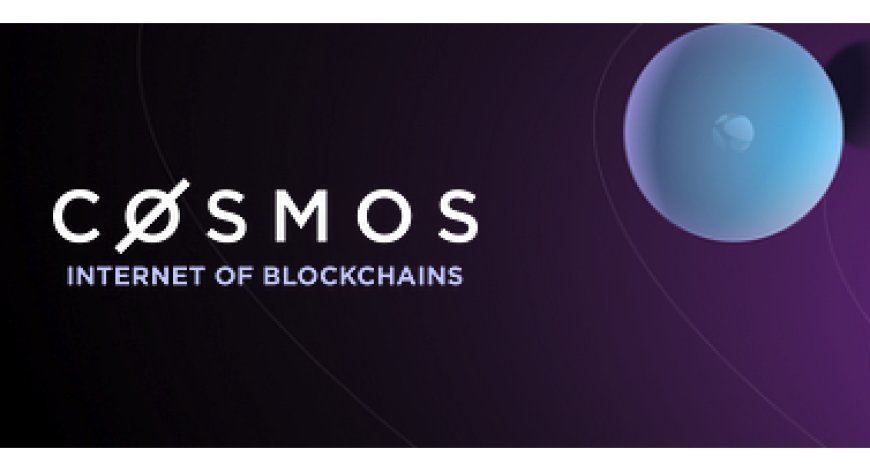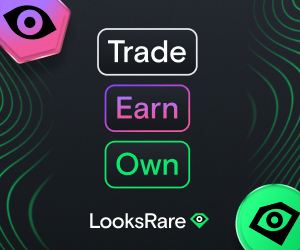What is Cosmos Blockchain? A complete Guide
Cosmos is the internet of blockchains, allowing to building of apps and services to connect using IBC, the Inter-Blockchain Communication protocol. This innovation enables users to freely exchange assets and data across sovereign, decentralized blockchains.

Cosmos embarked on a mission to build not just one blockchain, but an entire family of them.
Each blockchain is specifically designed to cater to its unique use case while facilitating seamless communication and asset swapping between them. The Cosmos SDK provides developers with an indispensable toolbox for creating their own Cosmos-based networks. Its versatility made it the go-to choice for any developer looking to launch a network with utmost efficiency and ease.
What Is Cosmos (ATOM)?
Cosmos presents itself as a solution to some of the blockchain industry's most challenging issues, such as the Internet of Blockchains. With a vision to counteract the limitations of slow, expensive, and environmentally harmful proof-of-work protocols like Bitcoin, Cosmos blockchain provides a connected ecosystem of blockchains using IBC protocol and network validators.
The project's objectives go beyond simplifying decentralized apps for developers using the cosmos ecosystem. Through a modular framework, Cosmos aims to demystify blockchain technology, making it more accessible and less complex for all types of network of blockchains. Additionally, an Interblockchain Communication protocol facilitates seamless communication between blockchain networks, thereby preventing industry fragmentation.
The birth of the Cosmos blockchain can be traced back to 2014 when Tendermint, a key contributor to the network, was established. Subsequently, in 2016, the publication of Cosmos' white paper marked a significant milestone. The following year witnessed a successful token sale. ATOM tokens, earned through a hybrid proof-of-stake algorithm, play a crucial role in ensuring the security of the project's flagship blockchain, the Cosmos Hub. Moreover, this cryptocurrency also contributes to the network's governance. (Source: Cosmos Academy)
For more information on the current value, trends, and price history of ATOM coins, visit the Cosmos coin price page.
Cosmos blockchain: The heart of the Interchain
The Interchain is an ever-expanding blockchain ecosystem of tokens, wallets, and tools, as well as interconnected applications and services, all built for a decentralized future using its own open source tools.
Marketplace
Set to operate a next-gen decentralized exchange, swapping digital assets from across the Interchain, with very low fees and instant transaction confirmation.
Security provider
With the highly anticipated Interchain Security feature on the horizon, ATOM will soon play a pivotal role in securing numerous chains, thereby earning additional staking rewards. Prepare for a new era of enhanced blockchain security and increased incentives with ATOM using proof-of-stake consensus mechanism.
Router
At the heart of the Hub lies a fundamental mission - to foster connectivity among chains. This is accomplished by establishing Inter-Blockchain Communication (IBC) connections with compatible chains and by operating decentralized bridges with prominent chains such as Ethereum and Bitcoin.
Custodian
Situated at the intersection of the Interchain lies the Hub - an exceedingly secure haven for safeguarding digital assets and seamlessly managing accounts across numerous chains. Experience the pinnacle of reliability and convenience in one centralized location.
How does Cosmos Blockchain work?
The Cosmos network comprises three fundamental layers:
1. Application Layer: This layer is responsible for processing transactions and updating the network's overall state.
2. Networking Layer: Enabling seamless communication between transactions and different blockchains, this layer facilitates efficient data exchange.
3. Consensus Layer: Serving as the bedrock of agreement among nodes, the consensus layer ensures conformity regarding the current system state.
To seamlessly integrate these interconnected layers and empower developers to create blockchain applications, Cosmos relies on a comprehensive suite of open-source tools.
At the core of this layered design lies Tendermint. The Tendermint BFT engine is the linchpin that empowers developers to construct blockchains without starting from scratch. It serves as an algorithm within the Cosmos software network, fortifying security, validating transactions, and committing blocks to the blockchain. Through the Application Blockchain Interface protocol, it seamlessly interfaces with applications. With Tendermint, developers can shape the future of blockchain technology with ease and efficiency.
Tendermint Byzantine Fault Tolerance (BFT)
At the heart of Tendermint lies Tendermint Core, an innovative proof-of-stake (PoS) governance mechanism that ensures the seamless operation of the distributed network powering the Cosmos Hub.
To contribute to the blockchain and participate in the decision-making process, participants, known as "validator nodes," must stake ATOM tokens. Becoming a validator requires being among the top 100 nodes in terms of staked ATOM. The voting power of validators depends on the amount of ATOM they have staked.
Users also have the option to delegate their tokens to other validators, granting them voting power while still earning a share of the block reward. Thanks to this flexibility, users can easily switch between validators based on their voting preferences.
Validators are strongly motivated to act honestly, as users have the freedom to switch between validators they delegate ATOM to. This system encourages validators to uphold integrity and transparency in their roles.
Cosmos Hub and Zones
The Cosmos Hub, the first blockchain on the Cosmos network, serves as an intermediary among the independent blockchains, known as "zones," within this ecosystem.
Within Cosmos, each zone operates independently, carrying out vital functions autonomously. This encompasses tasks such as account and transaction authentication, token creation and distribution, and implementing changes to their respective blockchains.
By meticulously tracking the states of all the zones, the Cosmos Hub facilitates seamless interoperability across the entire network. Its role is paramount in enabling efficient and cohesive collaboration among the zones.
Inter-Blockchain Communication Protocol
Zones are seamlessly linked to the Cosmos Hub through the Inter-Blockchain Communication protocol (IBC). This ingenious mechanism allows information to flow freely and securely between connected zones, creating a harmonious network. Once connected to the Cosmos Hub, a zone gains interoperability with every other attached zone. This means that blockchains with diverse applications, validators, and consensus mechanisms can effortlessly exchange data, fostering a dynamic ecosystem of collaboration and innovation.
Cosmos SDK
The Cosmos team has developed the Cosmos software development kit (SDK) which enables developers to build blockchains using the Tendermint consensus algorithm. This SDK streamlines complexity by providing the fundamental functionalities present in most blockchains, such as staking, governance, and new atom tokens. Additionally, developers have the freedom to add any desired additional features through the creation of plugins. Embrace the power to shape your blockchain effortlessly with Cosmos SDK.
Why does ATOM have value?
The ATOM token plays a crucial role in maintaining interoperability across zones within the extensive Cosmos network. It serves multiple functions - holding, spending, sending, and staking. As more blockchains are integrated into the network, relying on the Cosmos Hub for transaction histories, the value of ATOM is poised to appreciate.
By owning and staking ATOM (the native cryptocurrency), users gain the power to vote on network upgrades. The voting weight is determined by the amount of ATOM staked. Furthermore, in the interchain foundation, validators are rewarded with ATOM based on their stake, while delegators receive a percentage of this reward. It's important to note that there is currently no limit on the supply of new ATOM. Instead, Cosmos adjusts the token creation based on the amount of ATOM being staked. As of 2020, the annual inflation rate ranges between 7% and 20%.
Why use ATOM?
The Cosmos network offers a compelling value proposition by focusing on facilitating seamless interoperability between different blockchains. It boasts a diverse range of projects built upon its infrastructure, including a price-stable cryptocurrency and a decentralized finance (DeFi) platform that empowers traders to leverage their assets. Additionally, investors may consider acquiring ATOM and adding it to their portfolio, especially if they anticipate a surge in demand for frameworks that enable the creation of custom blockchains.
Cosmos vs. Ethereum
Although Ethereum developers have expressed support for transitioning to a Proof-of-Stake (PoS) consensus algorithm for years, the platform currently operates on a Proof-of-Work (PoW) algorithm, which raises concerns about its long-term sustainability when compared to the Cosmos blockchain. Additionally, scalability remains a significant challenge for Ethereum, with transaction execution times ranging from minutes to hours. In contrast, Cosmos' Tendermint BFT proof-of-stake algorithms enable processing thousands of transactions per second, ensuring a faster and more cost-effective process compared to Ethereum's occasionally high gas fees, which depend on blockchain traffic.
While Ethereum relies on permissionless smart contracts to handle complex financial instruments and consolidate its ecosystem, Cosmos adopts a different approach. Each smart contract or application within Cosmos functions as an independent blockchain, ensuring transactions proceed smoothly without interfering with one another. Furthermore, Cosmos employs a developer-friendly design to efficiently construct sovereign blockchains at low cost. Its interoperable system facilitates seamless communication between blockchains, a capability that Ethereum lacks, except when relying on the complex and relatively insecure exchange of wrapped tokens.
On the other hand, Ethereum's notable advantage lies in its widespread adoption as a blockchain platform. Its network effect positions it as the preferred choice for DeFi, NFTs, and the Metaverse, embodying the most fashionable aspects of blockchain technology both currently and in the foreseeable future.
Cosmos Blockchain official website: https://cosmos.network/











